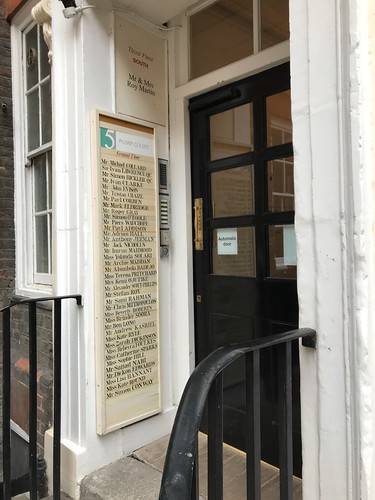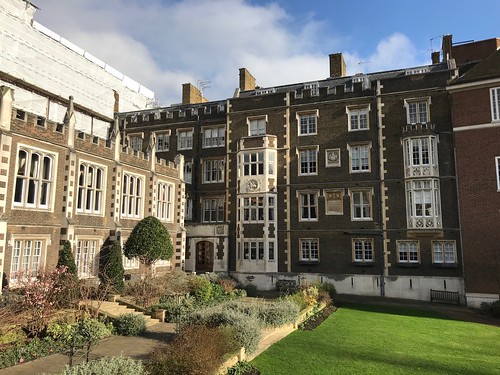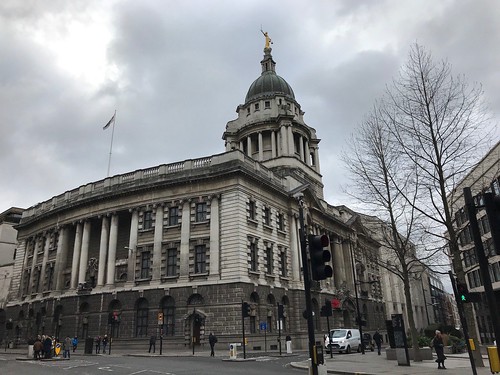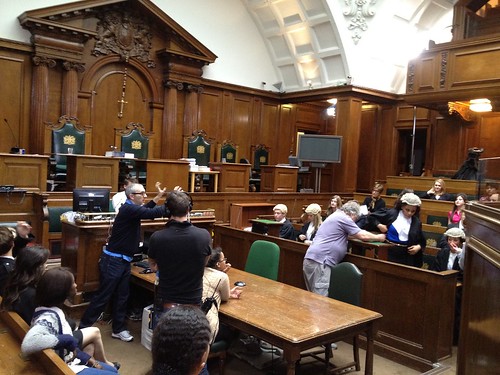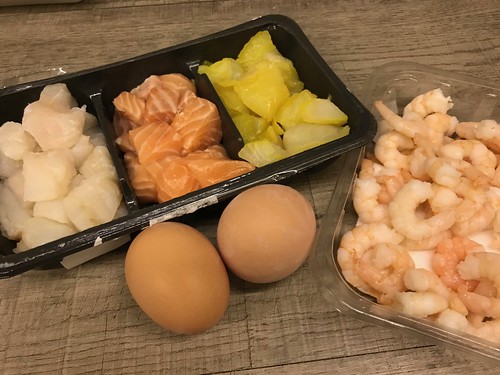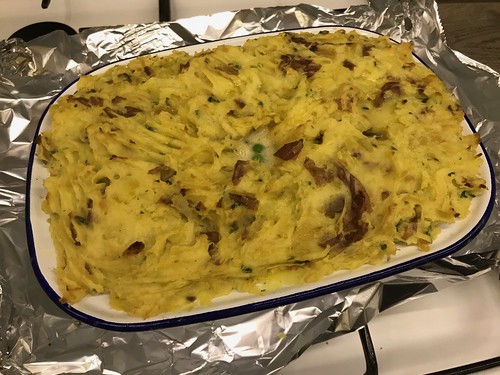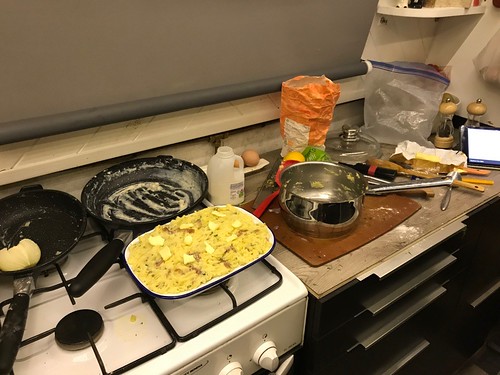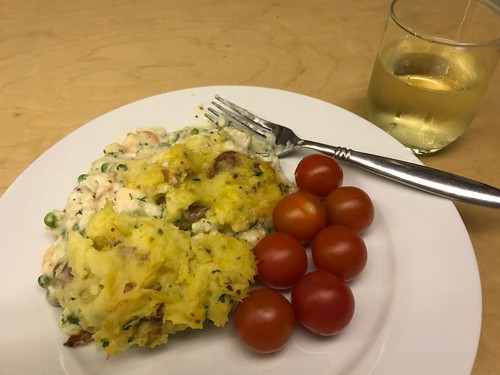I’ll start by admitting this is a huge topic, which is part of the reason for the delay in service this week. Then again, the only reason I know it’s a huge topic is because the aforementioned London Yoda has been bombarding me with additional sites and side stories since our already over-programmed outing a few weeks ago. We have concluded he suffers from a severe and debilitating Sub-category of Fear Of Missing Out which we’ve dubbed FOOMO (Fear Of Others Missing Out). I have pared things down unmercifully for this post, to the point where he may never speak to me again, but such are the sacrifices I make for the blog. Whatever the case, today we dip a toe lightly into the very deep waters of Legal London.
London Yoda loves a theme, so when he was planning our recent outing and mentioned the possibility of visiting the Inns of Court, I jumped at that idea. This is mostly because I’d just finished reading “The Best of Rumpole”. Horace Rumpole is a much-loved fictional barrister created by John Mortimer and appearing in a series of short stories. He's perhaps better known as Rumpole of the Bailey, portrayed by the late and much loved Leo McKern in a long-running BBC TV show of the same name. Both the books and the show are worth a look, being ripping yarns and a nice time capsule of 1970s and 80s British fashion. They're also a good introduction to a few of the interesting aspects of the legal system in the UK. For instance, Rumpole himself is a barrister, as distinct from a solicitor. Solicitors mainly advise clients, undertake negotiations and draft legal documents, whereas barristers are given the details of a case by a solicitor and are the ones who wear wigs and gowns and stand up in court to plead the case in front of a judge. Barristers are often self employed and work "in chambers” - an office space shared with other barristers. Rumpole’s celebrated speciality was criminal law, especially as tried in the most famous and highest criminal court in the UK the Central Criminal Court, better known as The Old Bailey, more on which later.
Those chambers barristers inhabit bring us back to the Inns of Court I mentioned earlier. The Inns of Court are the professional associations for barristers in England and Wales. Every barrister must belong to one of the four Inns called Inner Temple, Middle Temple, Lincoln’s Inn and Gray’s Inn. Historically there were more than just four inns, and, unsurprisingly, they started life as exactly that: inns. They were places where lawyers lodged, dined and congregated. Gradually they also began to practice and teach at these inns, and eventually Inns came to be places where lawyers were trained. Confined to a geographically small area of central London, the Inns no longer take much part in the training of lawyers, but do retain the sole right to call students to the bar. (“Called to the bar” being the term to indicate that one is permitted to argue in court on behalf of another party. Basically, it means you’re an officially proper grown-up barrister.)
Every law student applies to one of the four Inns, though apparently it makes no difference in which one you settle. The Inns are organised roughly along the lines of an Oxbridge college, with residences, a chapel, dining hall and the aforementioned chambers.
So we’ve got barristers and solicitors, but there’s another term that pops up a lot when dealing with the lawyers in England (including in Rumpole, naturally). QC, or Queen’s Council is an honorific title granted to senior or distinguished barristers, appointed by the Queen to be one of "Her Majesty's Counsel learned in the law.” They are often referred to as “silks”, after the silk robes they wear, so becoming a QC is sometimes referred to as “taking silk”. And for the record, the first woman to take silk was 1934 - then King’s Council, as it was during the reign of George V. She was Helen Kinnear, and the ground-breaking event occurred in Canada! Lots of Commonwealth countries retain the practice of appointing QCs, though some have abolished the designation or changed to the infinitely less melodious “Senior Council” (SC) (Yawn.) Rumpole was never made a QC, and frequently referred to the rank as “Queer Customer”.
So let’s review. Every barrister in England and Wales - from the lowliest newbie to the silks and judges - must be a member of one of the Inns of Court, but it doesn’t matter which one and they may actually never go to their Inn. On the other hand they might go often, attend services at the chapel, dine in the dining hall, attend lectures there and spend their working days in chambers on the grounds. In any case, the Inns themselves are quite lovely and offer a quiet respite from the busy London streets around them. They’re mostly low stone buildings, sunny gardens, and medieval chapels, much of which is open to the public though off course some areas are off limits (including one lovely lawn that was open only to residents and “resident dogs”).
So where does this "temple" business come from? Middle Temple? Inner Temple? For that we have to reach all the way back to 12th century and the founding of the Knights Templar. The Knights Templar (more accurately called the Poor Fellow-Soldiers of Christ and of the Temple of Solomon, but often just called the Templars) were a Catholic military order most famous for fighting in the Crusades and developing a surprisingly sophisticated financial infrastructure sometimes credited as being the precursor to modern banking. For at time they were one of the most powerful of the church’s orders but more importantly for us, they built the Temple Church, a lovely medieval building in the heart of Temple. In fact, pretty much anywhere with Temple in the name can be traced back to the Templars.
The Temple Church is architecturally interesting because the nave is circular, a defining feature of Templar churches. It was part of that grant of land in 1608, the Templars having been officially disbanded in 1312. What happened between 1312 and 1608 is opaque to my halfhearted googling efforts, so I rely on London Yoda to pipe up in the comments section and enlighten us. The church itself (having been in the care of fat-walletted lawyers for hundreds years) is in really good condition, though it did have to be rebuilt substantially after bombings in WWII. Importantly for us, the Temple Church styles itself as “the mother church of English common law”, mostly because of its links to Magna Carta. (Special thanks to London Yoda for that link, which you should not ignore because it is most definitely not just another Wikipedia page.) William Marshall, 1st Earl of Pembroke (just another Wikipedia page), who mediated between King John and the barons, is buried in the Church. And of course while the actual content of the Magna Carta is mostly about the rights of Barons v. the King, it’s widely considered to have become the basis of common law and a symbol of justice and human rights. So that all ties in nicely with our legal theme.
Further to that theme, let’s talk about another great institution I alluded to earlier. Rumpole’s favourite legal venue, and probably the most famous court in England - The Old Bailey. The Old Bailey is the Central Criminal Court of England and Wales (as distinct from the Royal Courts of Justice - London’s high court for civil matters). Located near the location of the old Newgate Prison, the Old Bailey has been the site of some of the most notorious cases in history, including that of the Yorkshire Ripper and the Kray Twins. In order to get a real feel for the place, I took a tour conducted by a former journalist who covered trials at the Old Bailey for decades before giving it all up for the glamorous life of a tour guide.
We started at a pub. This was auspicious, especially when they brought out the strong coffee and warm croissants to counteract the earliness of the hour. Happily, the pub itself - the Viaduct - is a gorgeous and historic old gin palace as well as being a home to a few of the old cells from the notorious Newgate Prison. Newgate was the site of a prison for more than 700 years, starting in 1188 and significantly rebuilt in 1402 by the legendary London Lord Mayor Dick Whittington. Conditions were generally appalling in the prison, though could be greatly improved with the universal cure-all: money. In fact, wealthier inmates were able to bring in their own food, furniture, servants, and even wives. One notable resident raised 6 children while incarcerated at Newgate for 40 years. For most though, a stretch in prison was a miserable, overcrowded, cold, hungry and disease-ridden business, as evidenced by the cells in the basement of the Viaduct.
The cells under the Viaduct were once linked by a tunnel to the Old Bailey, just across Newgate Street. There’s been some form of a court on the site since the 16th century, but the current building dates from 1902, with a new addition added in the 1970s.
For the most part the viewing galleries in the courtrooms are open to the public on the principal that justice must not only be done, but must be seen to be done. Most of the building, though, is off limits to the public, including the domed Grand Hall. I decided to visit the 1970s-era building first, mostly because everyone else on the tour went to the old building, and I didn’t fancy the queue. However even though the viewing galleries are open, getting in is a serious matter. If you think airport security is tight, the Old Bailey trumps them by a long way. In an airport you might have to surrender your phone and computer to the x-ray machine, but you get them back soon enough. At the Old Bailey no phones, computers, tablets, cameras or anything of the sort are allowed. At all. Period. No exceptions. Luckily, part of the tour service provided at the Viaduct included storage of bags and phones while visiting the court, but I did have to trek back to deposit my Apple Watch after failing on my first attempt. The security guards are unfailingly polite but unflinching. Apparently there’s a travel agent’s office nearby who will hold your electronics for £5 after you’re turned away. They must do a roaring trade.
Once I finally gained access I found the only courtroom open, where closing arguments were underway. I was allowed in by another guard with strict instructions that I must remain quiet and stay for at least half a hour before leaving to minimise the distraction to the participants. There was even a sign on the wall instructing spectators to “refrain from speaking or moving”. This turned out to be a bit difficult, as the barrister in the case was, er, really quite boring. Of course I entered in the middle of his address and with no knowledge of the case, but regardless it was not exactly Rumpole-level stuff. He spent a lot of time stuttering and hesitating and fiddling with his wig, though in fairness having a carpet of horsehair on your head would rather invite that I suppose. And the 1970s courtroom was all blonde wood and perspex and green leather and felt like it might have come from an Ikea catalogue. Still, there was a jury and a judge and an appropriate scattering of other wigged and robed types, and I managed to pass the requisite 30 minutes without being ejected for sneezing or moving or breathing too loudly.
I was much more interested to the see 1902 building, so I went there next only to find out that there really wasn’t anything to see. The guards at the door were polite and apologetic but it really seemed that I was going to be out of luck. However, I must have hung around just long enough, with just the right disappointed but unthreatening expression that one of the guards took pity on me and escorted me up to the only courtroom that was sitting hearing sentencing arguments. That room was much more satisfying - small, but covered in dark wood panelling and elaborate plasterwork. I was the only person in the gallery so I concentrated on making myself as small as possible and just listened to the defence attorney and the judge argue about a guy from my old neighbourhood in Lambeth. And just as I was thinking that I’d pretty much seen what I wanted to see and really fancied a bit of lunch, the judge banged his gavel and rose and I was able to slip out, thank the security guards profusely, and make my exit.
So with the help of Yoda and a decent tour guide and some friendly security I managed to get a pretty good look at some of London’s legal past and present without getting nicked for the felony misdemeanour of Blinking While in Her Majesty’s Courtroom. In other news... wow is there ever other news. In a few days I'm off for a new big job on the other side of the world, so stay tuned for details about that. In the mean time, please refrain from speaking or moving.
London Yoda loves a theme, so when he was planning our recent outing and mentioned the possibility of visiting the Inns of Court, I jumped at that idea. This is mostly because I’d just finished reading “The Best of Rumpole”. Horace Rumpole is a much-loved fictional barrister created by John Mortimer and appearing in a series of short stories. He's perhaps better known as Rumpole of the Bailey, portrayed by the late and much loved Leo McKern in a long-running BBC TV show of the same name. Both the books and the show are worth a look, being ripping yarns and a nice time capsule of 1970s and 80s British fashion. They're also a good introduction to a few of the interesting aspects of the legal system in the UK. For instance, Rumpole himself is a barrister, as distinct from a solicitor. Solicitors mainly advise clients, undertake negotiations and draft legal documents, whereas barristers are given the details of a case by a solicitor and are the ones who wear wigs and gowns and stand up in court to plead the case in front of a judge. Barristers are often self employed and work "in chambers” - an office space shared with other barristers. Rumpole’s celebrated speciality was criminal law, especially as tried in the most famous and highest criminal court in the UK the Central Criminal Court, better known as The Old Bailey, more on which later.
Rumpole of the Bailey, as portrayed by Leo McKern, sporting a proper horsehair wig
Inside the grounds of the Middle and Inner Temple, which share a plum bit of land stretching between the Thames and Fleet Street, granted to them in 1608 by King James I and now worth ninety-four squillion pounds.
The sign outside 5 Pump Court Chambers, listing many of the barristers who practice there.
So let’s review. Every barrister in England and Wales - from the lowliest newbie to the silks and judges - must be a member of one of the Inns of Court, but it doesn’t matter which one and they may actually never go to their Inn. On the other hand they might go often, attend services at the chapel, dine in the dining hall, attend lectures there and spend their working days in chambers on the grounds. In any case, the Inns themselves are quite lovely and offer a quiet respite from the busy London streets around them. They’re mostly low stone buildings, sunny gardens, and medieval chapels, much of which is open to the public though off course some areas are off limits (including one lovely lawn that was open only to residents and “resident dogs”).
Sunny gardens
Inside Temple Church. The subject of the Templars is one that people devote lifetimes of study to so if it seems to you that I’ve glossed over basically everything, you are completely correct.
The tomb of the Earl himself, which is in that circular nave. Popular wisdom is that a knight depicted with his legs crossed dies while on crusade, but it's not actually true. Plus it kind of makes them look like the died while searching for a toilet.
We started at a pub. This was auspicious, especially when they brought out the strong coffee and warm croissants to counteract the earliness of the hour. Happily, the pub itself - the Viaduct - is a gorgeous and historic old gin palace as well as being a home to a few of the old cells from the notorious Newgate Prison. Newgate was the site of a prison for more than 700 years, starting in 1188 and significantly rebuilt in 1402 by the legendary London Lord Mayor Dick Whittington. Conditions were generally appalling in the prison, though could be greatly improved with the universal cure-all: money. In fact, wealthier inmates were able to bring in their own food, furniture, servants, and even wives. One notable resident raised 6 children while incarcerated at Newgate for 40 years. For most though, a stretch in prison was a miserable, overcrowded, cold, hungry and disease-ridden business, as evidenced by the cells in the basement of the Viaduct.
The space was too tiny to get a decent picture, but would have housed 10-15 prisoners.
The hole in the ceiling is how food was passed down. It was all exceptionally dank and drippy.
Here’s the famous building, including the statue of the Lady Justice with her scales on top of the dome. You can’t see it in this photo, but the pans of the scales each have a small drainage holes drilled in them. Apparently they were added after a senior judge entering through the main doors was drenched by a panful of water caught in the wind and promptly dispatched a pair of workmen and a sturdy ladder to rectify the situation.
Here’s a picture of the Grand Hall, which I did not see of course. Thanks Google Images!
I was much more interested to the see 1902 building, so I went there next only to find out that there really wasn’t anything to see. The guards at the door were polite and apologetic but it really seemed that I was going to be out of luck. However, I must have hung around just long enough, with just the right disappointed but unthreatening expression that one of the guards took pity on me and escorted me up to the only courtroom that was sitting hearing sentencing arguments. That room was much more satisfying - small, but covered in dark wood panelling and elaborate plasterwork. I was the only person in the gallery so I concentrated on making myself as small as possible and just listened to the defence attorney and the judge argue about a guy from my old neighbourhood in Lambeth. And just as I was thinking that I’d pretty much seen what I wanted to see and really fancied a bit of lunch, the judge banged his gavel and rose and I was able to slip out, thank the security guards profusely, and make my exit.
Inside the famous Old Bailey Courtroom One, again thanks for Google Images.



